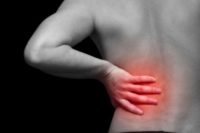The same hierarchy of controls framework used to prevent workplace injuries can help reduce the incidence or spread of infectious diseases that result from exposures at work. That is one of the key findings of a study just published by the National Institute for Occupational Safety and Health (NIOSH), whose researchers reviewed nearly a decade’s worth of infectious disease investigations in workplaces across the U.S. to better understand the range of cases, the risk factors for workers, and the ways to prevent infectious disease transmission on the job.
“The cases we reviewed allowed us to identify a range of diseases, specific settings and activities that are at an increased risk for certain infectious diseases, and employee and workplace factors that often facilitate transmission of the disease,” said Marie A. de Perio, MD, one of the lead authors of the study. “We then used this information to highlight effective prevention and control measures that should be taken into account at worksites in order to prevent the spread of disease.”
Researchers studied specific cases of the different ways a worker can get infected, and found that reported cases appear to be concentrated in specific industries and occupations, especially the healthcare industry and among laboratory workers, animal workers, and public service workers. These include workers who come in contact with ill persons or with livestock, poultry, or other animals as part of their job. In addition to becoming infected themselves, some workers may also serve as vectors that spread the disease to others; for example, workers in food preparation and serving-related occupations have been identified as sources of transmission in foodborne outbreaks.
Considering the occupational risk factors, strengthening biosafety programs in those industries and involving epidemiologists, physicians, industrial hygienists, and engineers could help prevent spread of occupationally acquired infectious diseases to co-workers and the general public.
“What is important to realize is that effective prevention and control measures begin with using the occupational health and safety hierarchy of controls as a framework, with the elimination of hazards being the most preferred occupational health and safety measure,” said Dr. de Perio. “Following the elimination of the hazard, the next best things are isolating workers from the hazard, changing the way people work, and personal protective equipment.”
Such measures include improved ventilation systems in workplaces, vaccination of workers, and personal protective equipment appropriate to the pathogen.
“Although it is clear from the literature review that many groups of workers are at risk for infectious diseases, we may be missing some clusters in workplaces, given that surveillance of work-related infectious diseases is not done systematically,” said Sara Luckhaupt, MD, MPH, co-author of the study. “We also may be missing exposures, industries, and occupations not readily identified as at risk.”
The NIOSH surveillance program is working on strategies to change this, based in part on the findings in this review. For information on NIOSH surveillance activity, please visit this page. For more information about NIOSH’s Health Hazard Evaluation Program, please visit this page.
The study, Case Investigations of Infectious Diseases Occurring in Workplaces, United States, 2006-2015, was published last week in the Emerging Infectious Diseases Journal and can be accessed here.
NIOSH is the federal institute that conducts research and makes recommendations for preventing work-related injuries and illnesses. More information about NIOSH can be found at www.cdc.gov/niosh.



